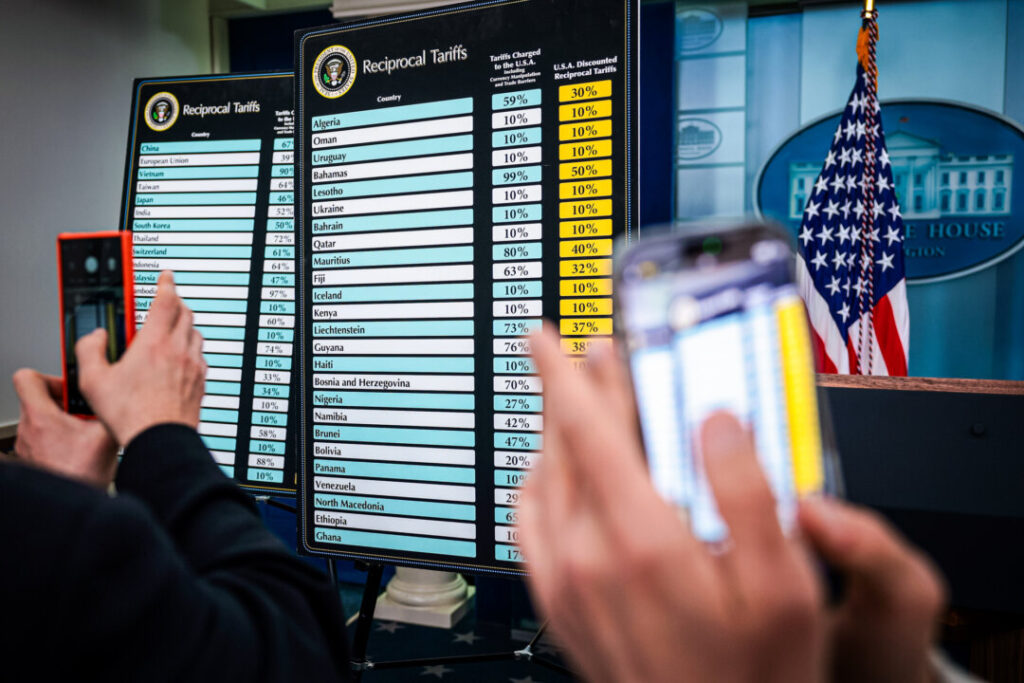Commentary
As part of the Trump administration’s trade war with the CCP, some Chinese imports now face tariffs of up to 245 percent, a move widely criticized as chaotic but actually central to a deliberate strategy to break China’s grip on U.S. supply chains and secure a better deal for the United States.
One of President Donald Trump’s first acts during his second term was to direct the House Select Committee on the Chinese Communist Party to reassess U.S.–China trade relations. The committee’s findings, consistent with those of the previous three administrations, concluded that Washington’s long-standing strategy had failed. China had grown stronger at America’s expense, exploiting trade privileges while the U.S. economy hollowed out.
In response, committee Chairman John Moolenaar (R-Mich.) and Rep. Tom Suozzi (D-N.Y.) introduced in late January the Restoring Trade Fairness Act, the first bipartisan legislation to revoke China’s Permanent Normal Trade Relations (PNTR) status. The bill proposes tiered tariffs—35 percent on non-strategic goods and 100 percent on strategic goods—phased in over five years, with strategic sectors defined based on U.S. priorities and China’s “Made in China 2025“ plan. In addition to eliminating PNTR with no future recertification, the committee also recommended closing the de minimis loophole, a move that Trump implemented through an executive order in April.
Supporters of revoking China’s trade privileges argue it is a necessary course correction after decades of failed policy. For years, U.S. strategy rested on the assumption that economic liberalization in China would lead to political reform. Promoted by leaders such as President Bill Clinton, this approach led the United States to support China’s entry into the World Trade Organization and grant it PNTR status in 2000. The expectation was that prosperity would produce democratic pressures and make China a responsible stakeholder in the international system.
Instead, the Chinese Communist Party (CCP) maintained authoritarian control, built a surveillance state, and funneled trade benefits into military expansion and global influence operations. While the United States lost factories, jobs, and strategic resilience, the Chinese regime grew richer and more aggressive.
Despite repeated intelligence warnings that the regime posed a top-tier national security threat, successive administrations allowed offshoring to continue, weakening American industry and enriching a rival determined to challenge U.S. leadership. While some critics warn of economic risks, the Trump administration and several policy experts argue that granting special trade privileges to China was a costly mistake and that restoring control over America’s industrial and strategic capacity is now essential.
To close a major loophole in U.S. trade enforcement, Trump revoked de minimis duty-free treatment for Chinese and Hong Kong imports under $800, a move consistent with the recommendations of the House Select Committee on the CCP. His executive order imposed a 90 percent ad valorem tariff on low-value shipments and introduced flat-rate duties, starting at $75 per package on May 2 and rising to $150 by June 1.
These measures specifically targeted Chinese e-commerce platforms that had exploited a loophole to flood the U.S. market with untaxed, uninspected goods. The goal was to reduce tariff evasion, sever dependence on Chinese supply chains, and counter Beijing’s role in fueling America’s fentanyl crisis.
Trump followed this action with a Section 232 investigation launched on April 15 to assess the national security risks associated with the United States’ reliance on critical minerals sourced from China. The move came after the CCP weaponized its export control regime by banning shipments of gallium, germanium, antimony, and six rare earth metals—materials vital to U.S. defense, aerospace, and semiconductor industries.
In response to retaliatory tariffs imposed by Beijing, the United States leveled a combined tariff burden of up to 245 percent on some Chinese imports. This included a 125 percent reciprocal tariff, a 20 percent penalty for fentanyl-related offenses, and targeted Section 301 tariffs ranging from 7.5 percent to 100 percent.
These restrictions are likely to deal a significant blow to China. The United States remains China’s largest export market, accounting for approximately $501.2 billion in goods in 2023—about 14 percent of China’s total exports and 2.9 percent of its GDP. At the same time, GDP growth has become a key measure of legitimacy for Chinese leader Xi Jinping. While China posted double-digit growth in the early 2000s, it has seen a steady decline in recent years. In 2024, growth was estimated at 4.9 percent, with projections for 2025 ranging between 3.4 and 4.5 percent, reflecting mounting trade tensions and worsening structural challenges.
Trump dubbed April 2, the day his tariff plan took effect, “Liberation Day.” While the media portrayed the sweeping tariff measures as chaotic and a self-inflicted crisis, they are part of a deliberate strategy. On April 15, Trump paused tariffs for more than 75 countries that reached out to his administration to negotiate, but left those on China fully intact, signaling that the CCP remains the central target of his trade policy.
At the heart of Trump’s approach is a simple but powerful truth: The United States is the world’s most valuable consumer market, and no country can afford to lose access to 340 million high-income American buyers. Instead of appeasing Beijing or ignoring years of intelligence warnings, Trump directly confronted China’s export-driven model. Foreign-invested companies account for a third of China’s trade, according to China’s commerce ministry, and many are now relocating to avoid rising U.S. tariffs.
What critics call chaos is actually a calculated realignment of global supply chains.
These moves represent a broader shift in U.S. industrial policy, focused on protecting critical sectors, reducing strategic dependence, and countering the CCP’s economic aggression. While Trump continues to demand fairer terms from all trade partners, the 245 percent tariff on some Chinese goods may signal more than just leverage—it points to a deliberate strategy to decouple the U.S. economy from the Chinese regime.
Views expressed in this article are opinions of the author and do not necessarily reflect the views of The Epoch Times.



